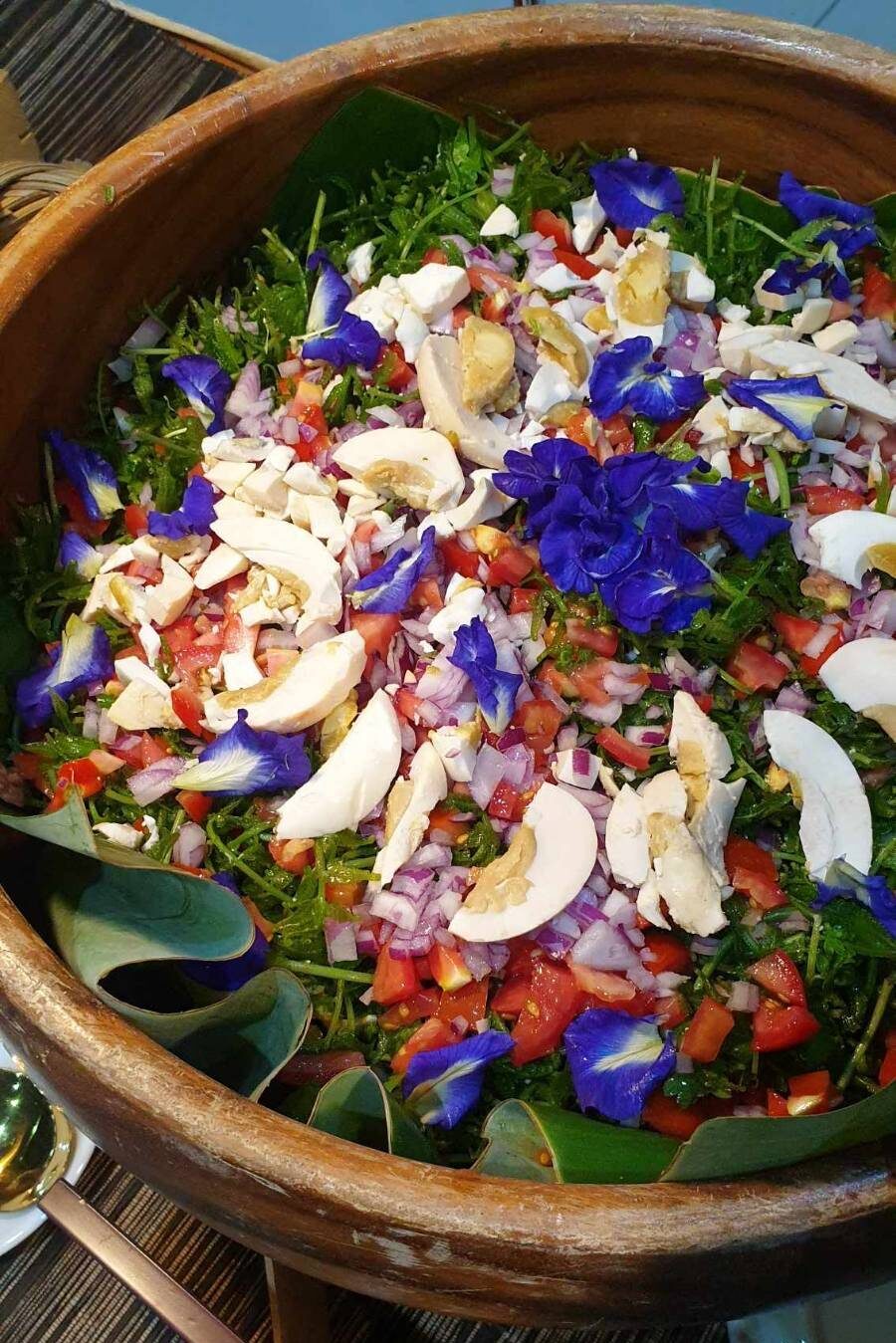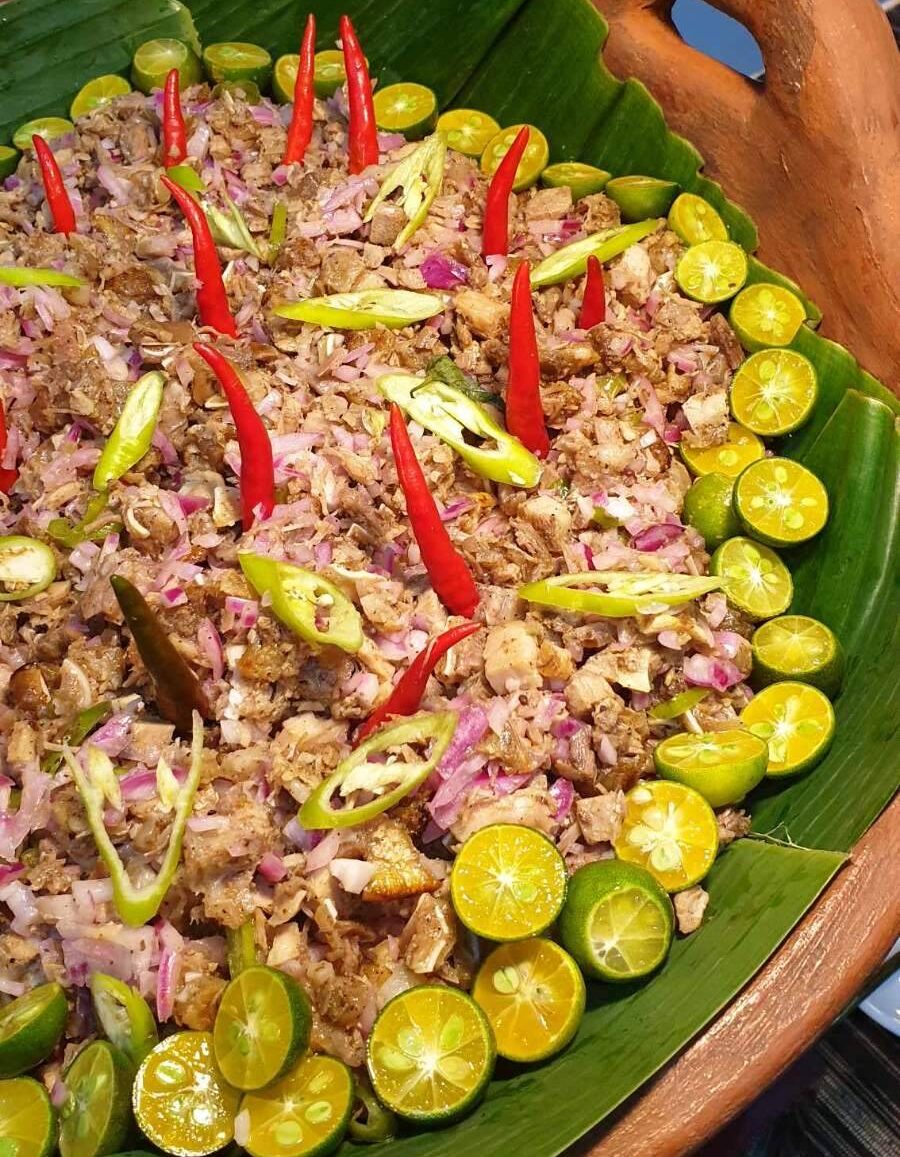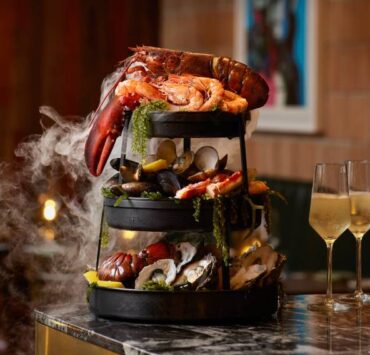Rediscovering Pampanga, from breakfast to dinner

A “Breakfast, Lunch, Merienda, and Dinner”-themed lunch was what we partook of during our parol-buying expedition to Pampanga. Since we rarely visit, I had to make sure that my friends savored the many specialties unique to the province.
Culture and heritage advocate Ruston Banal, chef Cherry Pasion Tan of Apag Marangle, and I planned the menu meticulously. The feast was appetizingly laid out for us as we entered Apag Marangle restaurant. The breakfast spread was inspired by “Agahan sa Bukid.”
Our favorites from the breakfast table was the pisto, a torta of sorts made with 70 eggs mixed with half a kilo of meat and vegetables. The rendition we had was with hotdogs.
Pisto is a dish steeped in ritual. Said to be a celebratory dish, it is prepared during special occasions: 40 days after death, during Holy Week on Sabado de Gloria, and for family reunions.
The Guagua longganisa was unique in itself—little red sausages that were tart with a hint of sweet and savory. It was unlike any I’ve tried before; to my taste buds, it seemed somewhat fermented. The shape was also distinct: tiny uncut cylinders about ¼ inch in diameter, separated not by tying or by string, but by little visible gaps created by the pinching of the small intestines.
Pindang damulag, another delicacy, is tapa made from old carabaos that have seen their days in the fields. The carabao meat is soaked in brine, cooked and served as tapang kalabaw.

Tamales took their place at the breakfast table, too. It is a precolonial dish called bobotu that stems from the old Javanese word meaning “little bumps.” It is made with glutinous rice, peanuts, chicken, and salted egg. At Apag Marangle, Chef Cherry adds achuete.
Pampanga is also one of the largest producers of tilapia; as such, they have become quite creative in the ways they cook it. During our meal, tinapang tilapia was a favorite.
‘Sisig’ 3 ways
Lunch dishes were typical kalutong Kapampangan, kaluto being the Filipino word for “recipe.”
The vibrantly green pacu salad garnished with salted eggs and tomatoes caught my attention. I’ve always wondered why fiddlehead ferns are plentiful in Pampanga. I learned, thanks to Ruston, that it is traded produce from the mountains, brought to the lowlands by the Aetas. Which is why the pacu in Pampanga are healthy, with hints of sweetness and a distinct crunch—they grow in the wild, atop the mountains.
The humba was spectacular. It is a seasonal dish, prepared during farming season, in September, then kept underground in a balanga to be enjoyed in December during the harvest season.

For this trip, I specifically requested for a variety of sisig.
Cherry prepared a trio that included the sisig Matua, more like a kinilaw where the cheeks and ears are steeped in sukang sasa and chilies with a splash of soy and red onions.
The second sisig was the Kapampangan way. The maskara was boiled and chopped, then mixed with vinegar, onions, chilies, and salt.
The third was sizzling sisig, made with pig’s mask that is first boiled then grilled, then chopped and tossed in a pan with margarine and seasoned to taste with salt, calamansi, and suka. It is finished with onions and chilies and sizzled on a plate before serving.

From ‘buro’ to ‘sampelot’
No visit to Pampanga will be complete without a taste of taba ng talangka; we had it sautéed and tossed in rice. The abundance of talangka is due to the many rivers that surround Guagua. Guagua comes from the Kapampangan word wawa, which means “river’s mouth.”
Of course, there was buro. But the buro we had was made from shrimp called tagilo. Tagilo is the local word for the more generic buro. We slathered the buro over pritong dalag and rolled it in mustasa leaves.
Camaru and betute tugak (fried crickets and stuffed frogs) are endemic fare. Pampanga is agricultural land, thus, crickets and frogs abound, specially during the rainy season.
I am enamored by kakanin. As such, our merienda consisted of it in a myriad ways.
The tibuk-tibuk, a carabao’s milk and rice pudding, was everyone’s top pick. It is often produced when there is an abundance of carabao’s milk, usually in the months of November and December.
Sinantan or sampelot, also known as bilo-bilo, is traditionally a Lenten dish, served during Good Friday. Cherry’s rendition was white as snow, made with coconut milk, bananas, kamote, langka, and glutinous rice balls.
Captivating was the sight of the barquillos made on the spot. My attention, however, shifted to the patcu maker. Patcu is a local crepe native to Guagua. Soft and delicate, the crepe is stuffed with young grated coconut, a recipe that originated from the Chinese mestizo families of Guagua.
Befitting our parol-buying expedition was the ligang pasku or nilagang Pasko, the star of the noche buena menu. Nilagang Pasko is soup made from Christmas leftovers, particularly ham bits, bones, native chicken, and beef trimmings like tendon.
The sight of the parol, the splendor of the churches of Betis and San Guillermo, the vision of Willy Layug painting al fresco while his fellow artisans sculpted and chiseled away, and the diversity of the food are reasons the Philippines, without a doubt, is both culturally and culinarily rich.
Follow @iamreggieaspiras on Instagram and Facebook; reggieaspiras.com


















